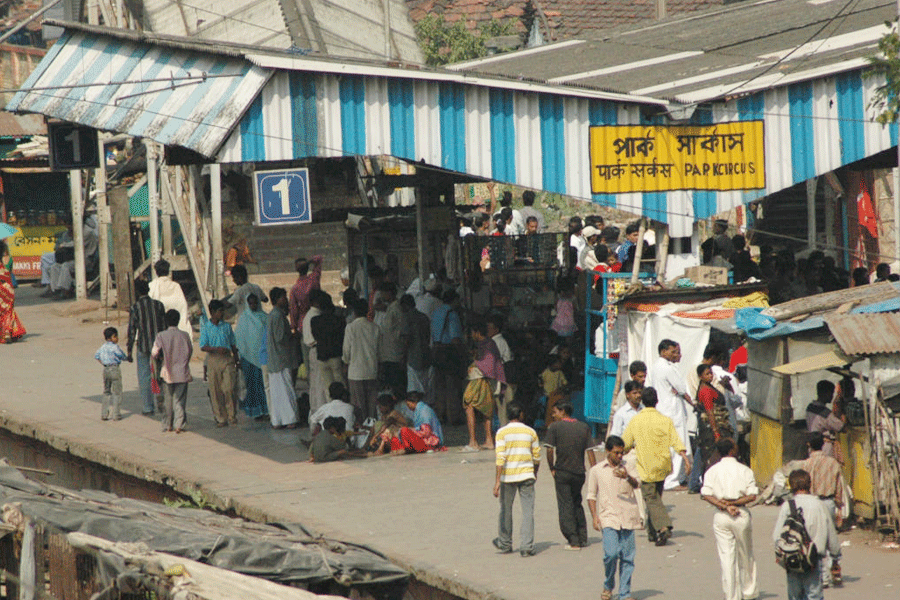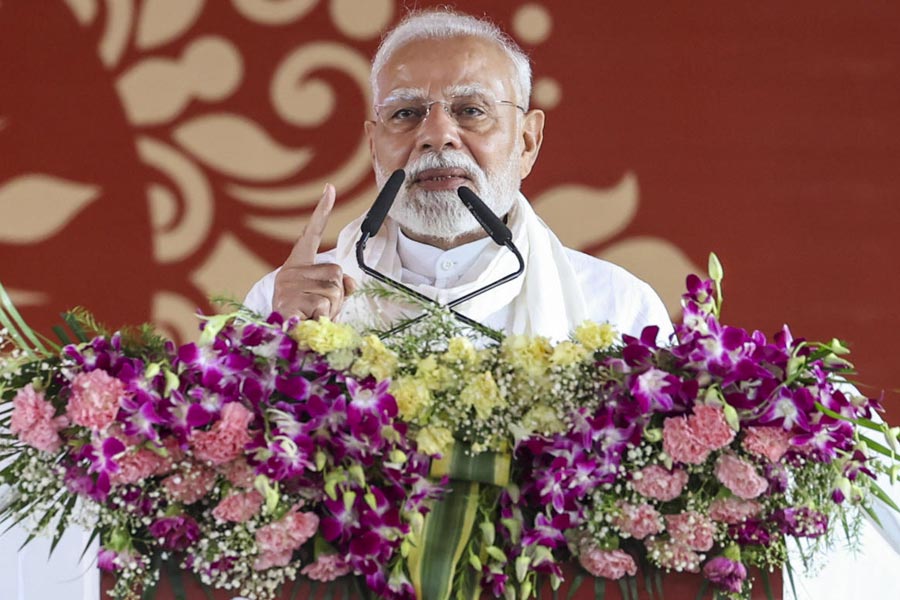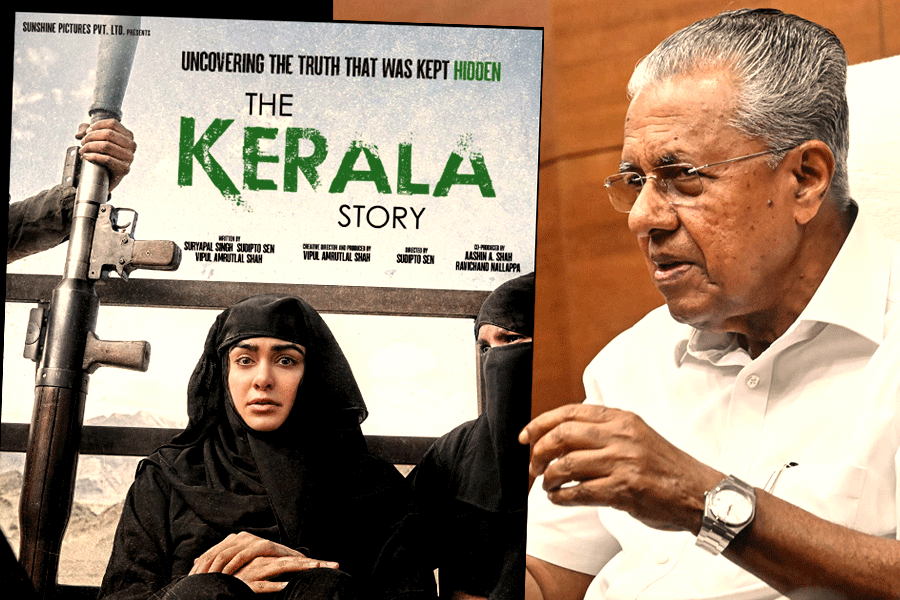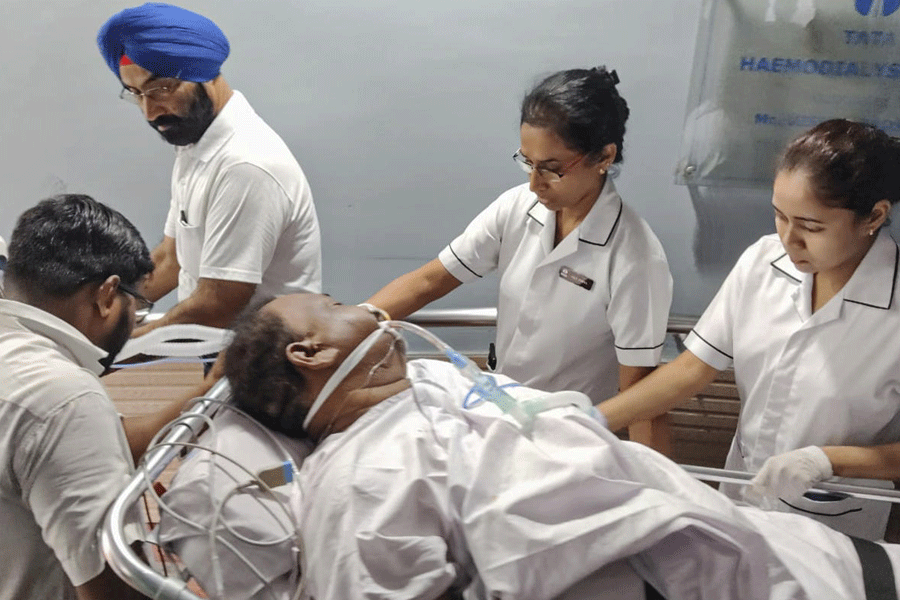 |
| A British memorial meeting after the coalition invasion of Iraq at a cemetery of soldiers killed during the siege of Kut in the First World War. (Reuters) |
New Delhi, June 10: In the annals of Indian military history, there are hundreds of stories of how poorly-clad and ill-equipped soldiers died fighting other people’s wars in foreign lands.
At a time when the security establishment is pondering over sending an Indian contingent to Iraq, here is a tale of Indian soldiers whose memory would have faded but for the gravestones in desecrated cemeteries on the banks of the Tigris. It was this tale that L.K. Advani told the Americans on his current visit to Washington.
Among the better known of these cemeteries is the one at Al Kut, a town between Basra and Baghdad in eastern Iraq. Last month, American soldiers restored the British cemetery but no sooner was that done than it was desecrated again by Iraqis angry over the unfurling of the British flag over it.
 |
A military historian, James Morris, has described the Battle of Al Kut as “the most abject capitulation in Britain’s military history”. Hundreds of thousands of soldiers of the British Indian Army were besieged in the garrison town of Al Kut — located in a loop of the river Tigris — for more than 140 days from September 1915. World War I was raging and Turkey had allied with Germany, prompting Britain to open a front in what was then Mesopotamia.
In April 1916, the British Indian Army was defeated by the Turks. But before that, several thousand Indian soldiers were killed in gunfire, by the harsh winter and by cholera and dysentery.
Most accounts by military historians record that the British Indian Army’s 6th (Poona) Division that marched from Basra along the Tigris was commanded by Major-General Charles Townshend, an officer known more for his flamboyance than for his tactical acumen.
Among the units of the division was the 114th Mahrattas.
Post-1947, the 114th Mahrattas — who had the battlecry “Chhattrapati Shivaji Maharaj ki Jai” — was absorbed into the 10th battalion of the Maratha Light Infantry regiment. The battalion is in active service.
The battle of Kut was described by T.E. Lawrence as a “slow-drawn agony”. The exact number of survivors of the 11,800-strong Poona Division will probably never be known. The survivors were taken on a long march to Turkey and incarcerated in prisoner of war camps.
Memories of the tragedy of Al Kut are being revived because of a possible historical parallel between events then and now. During the World War I, the British Indian Army was helping in securing British oil interests in the Gulf.
Now, some 87 years later, the American military desperately needs help in Iraq so that it does not have to commit more forces than it already has on the ground. The reinforcements it is seeking will be used essentially for policing duties in the war-ravaged country where lawlessness is rampant. Poland and Spain have promised help, with the former having already sent its soldiers.
Indian participation in peacekeeping missions overseas has mostly been under United Nation’s aegis. These have included the UN missions in Sierra Leone (1998-2000), in Lebanon (1998-till date), to Ethiopia and Eritrea (March 2001-till date) and in Angola (August 2002-till date).
In all, Indian security forces have participated in 37 UN missions. A total of 108 people — including some from the police services and a few civilians — have been killed in these missions.
But the Indian army has a long history of serving abroad before 1947, fighting for the British against German and Japanese interests in the First and Second World Wars. Now it is the turn of the Americans to ask for Indian military assistance for a war that is neither India’s nor supported by India.
The only other time the Indian military was on a peacekeeping mission abroad that was not sponsored by the UN was in Sri Lanka. Most observers still think that the Indian Peace Keeping Force’s adventure in the island nation was a disaster.










